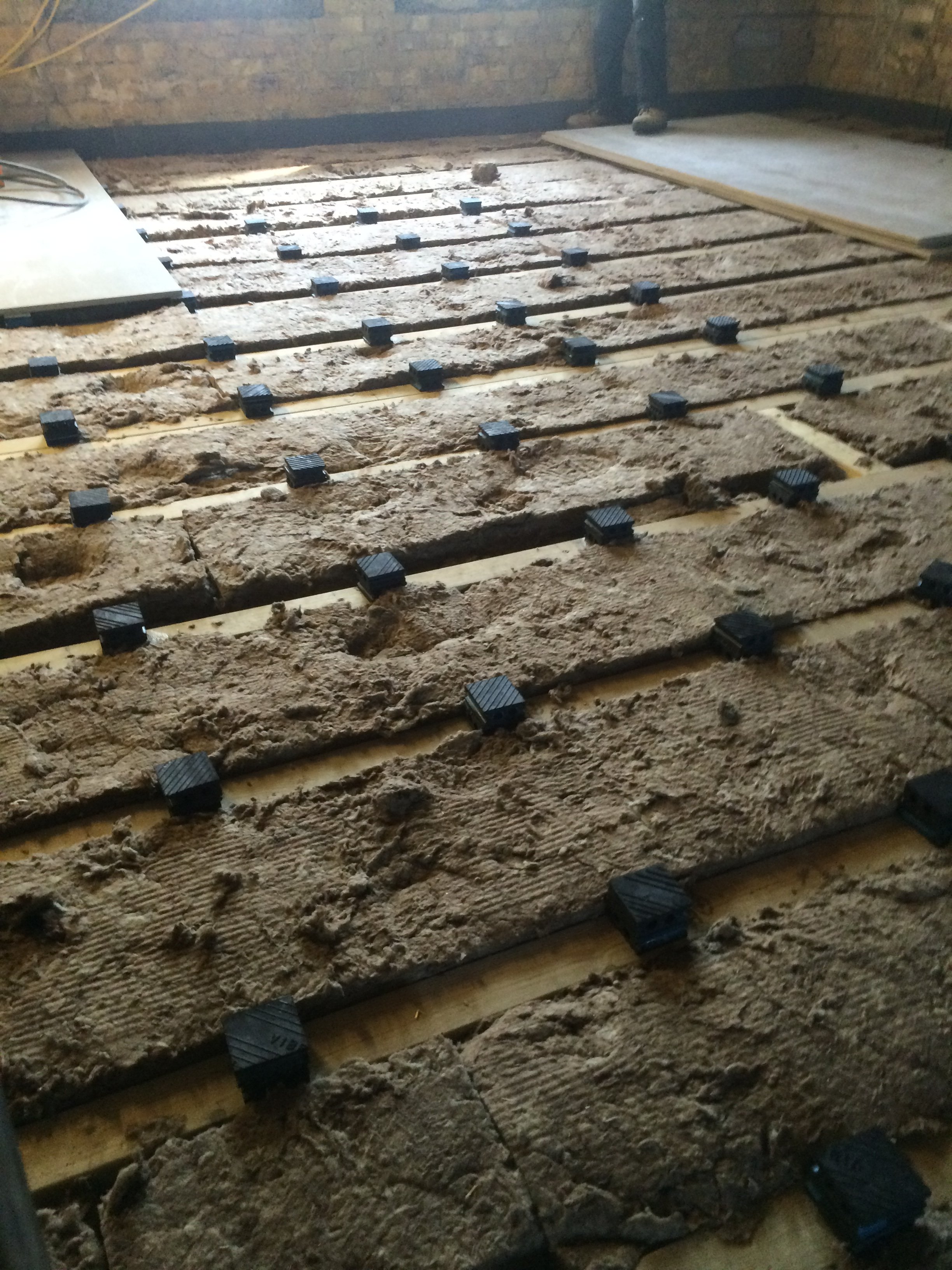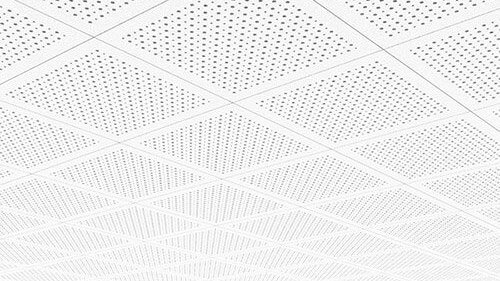Soundproofing and Acoustic Insulation
We provide high performance acoustic insulation products and soundproofing systems made to specification. Operating nationwide we also offer a wide range of professional services and expert advice on sound insulation testing, acoustic design, noise reduction, environmental noise and vibration control.
Acoustic insulation is a type of soundproofing that reduces the amount of sound entering or leaving an enclosed space by forming some kind of soundproofing barrier between the internal and the exterior area. Because unwanted noise is able to travel in more than one avenue, the exact process and choice of products and materials used to manage soundproofing sound insulation will vary. In a lot of cases, the soundproof insulation will effectively reduce sound transmission quite dramatically, but does not completely reduce the transmission of sounds.
Installation of acoustic floor sound insulation is the most effective method of reducing impact sound generated from footfall. There are many options for impact sound insulation, including acoustic underlays, resilient acoustic batten system, resilient acoustic cradle system and acoustic platform floors.
Acoustic Wall Panels
Acoustic Absorbers are designed to provide effective and affordable acoustic treatment for rooms. Their ease of application and durability make them ideal for fitting to walls or ceilings with minimum loss of height. They are particularly effective where high acoustic absorption, combined with an aesthetically pleasing appearance is required.
Anti-vibration mounts systems are used to create a resilient break when mechanical equipment is fixed rigidly to a building floor slab or ceiling. Vibration isolation involves installing vibrating equipment on resilient mounts such as isolation pads, steel springs, Inertia Base Frames, Isolation Hangers or Air Spring Mounts.
We supply a wide range of noise mitigating acoustic wall systems. Any of the acoustic mitigating systems that we have available are designed to provide a high level of sound reduction, these include soundproofing walls, double wall construction, staggered stud walls, sound insulation wall clip and wall base and top isolation.
Industrial Noise Control
Acoustic Ducting and acoustic lagging are systems or products to help mitigate or reduce Industrial noise. Industrial noise can exist in two forms: airborne and structure-borne and there are several solutions to control industrial noise including acoustic absorbers, acoustic ducting, acoustic barriers, damping and vibration isolation.
Soundproofing acoustic panels are the best way to reduce noise from bouncing off any hard surface. Acoustic panels are available in many different constructions, colours, shapes and sizes that can be installed on walls or ceiling spaces and are known for their multi-layered effectiveness in reducing noise and improving sound absorption.
The acoustic ceiling systems that we provide combine acoustic performance with aesthetics to meet and exceed your specific requirements. Our range of acoustic ceiling systems include sound insulation ceiling clips, spring ceiling hangers and isolation pad hangers.
Structural Isolation
Structural Isolation is important as efficiency in architectural design typically means lighter construction which is more prone to the transmission of unwanted noise and vibration through building elements. Specific design treatments include isolation of mechanical equipment, concrete floating floors, isolating ceilings, wall isolation and building isolators.
Acoustic foam, commonly referred to as sound absorbing foam or soundproof foam, is available in a selection of colours, patterns, thicknesses, and NRC (noise reduction coefficient) ratings. It can reduce noise pollution and sound leakage as they reduce echoes and background sounds not by blocking the sound but by absorbing it.
One of the more popular approaches to acoustic insulation is the creation of a soundproof barrier of some type between the origin of the sound and the whole surrounding area. The installation of acoustic wall panels is one example. With this application, the soundproofing panels contain foam or other materials core materials such as glass fibre or thermal insulation that can help to absorb echoing, reverberation, or other types of sound transmissions.
Another possibility with acoustic insulation involves inserting sound-reducing materials within the existing structure. While this method does not eliminate sound from penetrating the wall or ceiling itself, it can usually absorb enough of the noise to reduce the amount that appears on the opposite side of the wall or construction. This approach is often used in residential buildings and other areas where people live and work in close proximity.
The use of specially treated building materials can also provide a good amount of acoustic insulation. By utilizing materials such as acoustic plasterboard boards that are laminated with sound reducing properties or a mass layer, it is possible to construct interior walls and ceilings that minimize the transference between rooms.
For the maximum amount of acoustic insulation, it is usually a good idea to design and implement several soundproof insulating options at the same time. For example, building interior walls with wood or concrete panels treated to reduce sound, covering them with padded acoustic panels, and making use of sound reducing acoustic foam insulation to infill the wall cavities will greatly reduce and possibly eliminate most of the movement of sound waves or unwanted noise from one area to another.
Choosing the correct options for effective acoustic insulation often requires the advice of professional experts. This is required when designing a new structure or making renovations to an existing dwelling or public building. A professional can make feasible suggestions based on the degree of sound reduction desired, level of soundproofing needed, the overall layout and current design of the space, and the use that will take place within the building.










